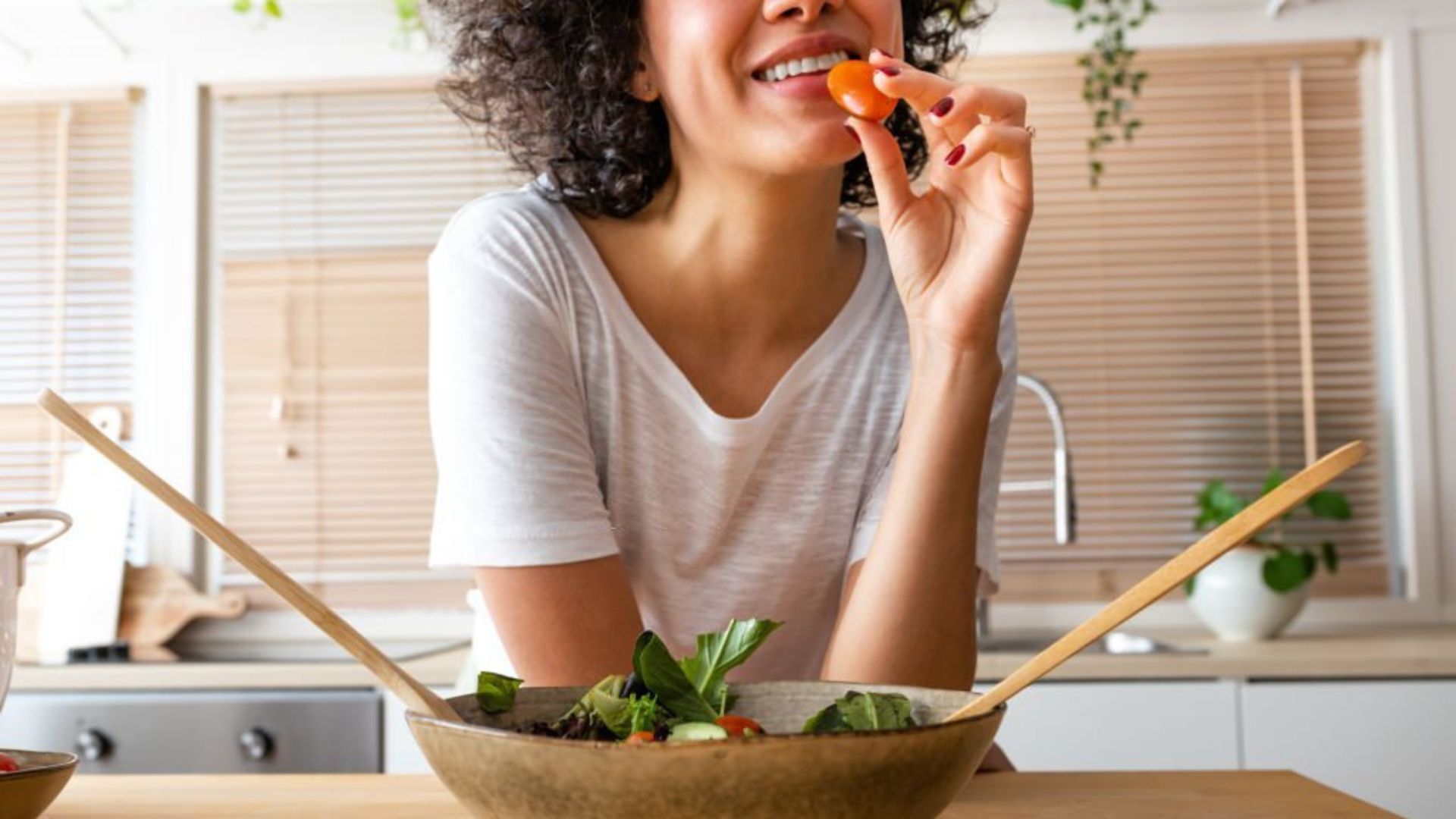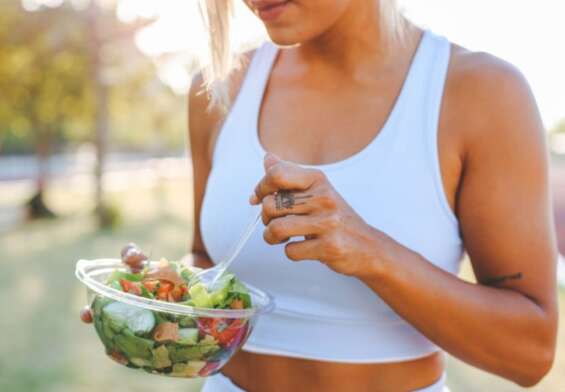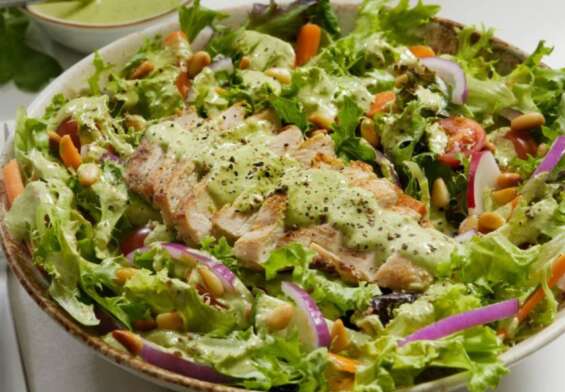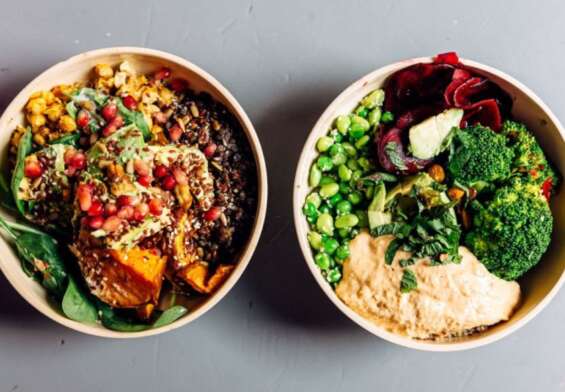
The Volumetrics Diet: How to Eat More and Weigh Less
The Volumetrics Diet, created by nutritionist and dietician Barbara Rolls, is a diet plan that focuses on the volume of food that you consume. It is based on the idea that eating foods with a low energy density (calories per gram) is the key to controlling hunger and losing weight. The diet is based on the idea that eating more of certain types of foods, such as fruits, vegetables, legumes, and grains, can lead to a feeling of fullness while eating fewer calories. It encourages choosing foods that are lower in calories but still satisfying, such as soups, salads, and other low-calorie dishes. The Volumetrics Diet also encourages healthy eating habits and physical activity. It is designed to be flexible and achievable for most people, making it a great option for those looking to lose weight and maintain their health.
How Volumetrics Diet Can Help You Lose Weight and Keep it Off
If you’re looking for a way to shed those extra pounds and keep them off, the Volumetrics Diet might just be the perfect solution for you. But before you start counting calories and cutting back on carbs, let’s take a look at how this diet can help you lose weight and keep it off.
Here’s the thing: the Volumetrics Diet focuses on eating a variety of nutrient-rich foods while controlling portion sizes. This means that you’ll be eating a lot of low-calorie, high-volume foods that will help you feel full and satisfied without overeating.
For example, instead of eating a large plate of pasta, you might switch to a plate of whole-grain pasta with a side of vegetables, which will provide you with the same amount of calories but with more fiber, vitamins, and minerals. In addition, you’ll be able to eat a greater volume of food with fewer calories, which can help you stay full for longer and help you reduce your overall caloric intake.
The Volumetrics Diet also encourages you to eat more fruits and vegetables, as these are naturally low in calories and can help you lose weight. Plus, these nutrient-rich foods will provide you with essential vitamins and minerals that are essential for overall health.
Finally, the Volumetrics Diet also emphasizes the importance of physical activity. Regular exercise not only helps you burn calories, but it also helps to boost your metabolism and improve your overall health.
So if you’re looking for a way to lose weight and keep it off, the Volumetrics Diet may be just the ticket! With its focus on portion control, eating nutrient-rich foods, and regular physical activity, this diet can help you achieve your weight loss goals while still having fun. So don’t wait any longer – give the Volumetrics Diet a try and see how it can help you reach your weight-loss goals in a way that’s both fun and lasting!
Recipes for Healthy, Low-Calorie Meals with Volumetrics Diet
- Grilled Chicken and Veggie Bowl: This delicious dish is sure to fill you up without piling on the calories! Start with grilled chicken breasts and a medley of roasted vegetables. Serve with quinoa and a sprinkle of feta cheese for a truly scrumptious meal.
- Zucchini Noodle Bowl: Looking for a light meal that won’t weigh you down? Try this tasty zucchini noodle bowl! Start by sautéing a generous portion of zucchini noodles with your favorite spices. Top with grilled chicken or fish and a sprinkle of Parmesan cheese for a satisfying and low-calorie meal.
- Baked Salmon with Broccoli: This protein-packed meal is sure to satisfy your hunger and keep your calorie count down. Start with a piece of baked salmon and serve with steamed broccoli and a side of quinoa. Top with a light lemon vinaigrette for a tasty and healthy meal.
- Roasted Veggie Wrap: Craving something light and savory? Try this roasted veggie wrap! Start by stuffing a whole wheat wrap with roasted veggies and your favorite low-fat cheese. Serve with a side of hummus for a delicious and nutritious meal.
- Egg White Omelette: Keep your calorie count low with this light and fluffy egg white omelet! Start with a generous portion of egg whites and your favorite veggies. Top with a sprinkle of feta cheese for a delicious and nutritious meal.
An Overview of the Benefits of the Volumetrics Diet
Are you looking for a diet that will help you to lose weight and keep it off for good? Well, look no further than the Volumetrics Diet! This revolutionary diet has been helping people shed pounds and keep them off for years. But what exactly is the Volumetrics Diet and why is it so beneficial? Let’s take a closer look.
The Volumetrics Diet is based on the idea that you should focus on eating foods that are low in calories but high in volume. This means that you’ll be eating a lot of vegetables, fruits, and whole grains, which are all extremely nutritious and low in calories. You’ll also be avoiding foods that are high in fat and sugar, such as processed snacks and desserts, as these are usually very high in calories.
The Volumetrics Diet is also great for weight loss because it encourages you to eat smaller meals more frequently throughout the day. This helps to keep your metabolism revved up and prevents you from feeling overly hungry in between meals. It also helps to keep your blood sugar levels stable, which can help to reduce cravings and overeating.
The Volumetrics Diet also encourages you to cook your own meals at home. This not only helps to save money, but it also allows you to control the ingredients and portion sizes of your meals. This can help to keep your calorie intake in check, which is essential for weight loss.
So there you have it – the Volumetrics Diet is a great way to lose weight and keep it off for good! With its emphasis on healthy, low-calorie foods, smaller meals, and home cooking, this diet is sure to keep your waistline trim and your energy levels high. So why not give it a try today? Who knows, you may just find that the Volumetrics Diet is the perfect fit for your lifestyle!
Understanding the Four Different Categories in the Volumetrics Diet
Are you looking for a way to change your diet and improve your health? Well, look no further than the Volumetrics Diet! This diet is all about controlling your calorie intake by focusing on the volume of the food that you eat. It’s a great way to get the most nutrition out of the food you eat while still allowing you to enjoy some of your favorite snacks and meals. But what are the four different categories that make up the Volumetrics Diet? Let’s take a look!
First, there’s the “Very Low-Calorie” category. This group includes foods that are low in calories, like fruits and vegetables, as well as some dairy products. It’s a great way to get a ton of nutrition without consuming too many calories.
Next up is the “Low-Calorie” category. Here you’ll find things like lean meats, fish, whole grains, and legumes. These foods are a bit higher in calories than the very low-calorie category but still provide plenty of nutrition.
Third is the “Moderate-Calorie” category. This group includes foods like eggs, nuts, healthy fats, and some sweets. These foods are a bit higher in calories but still provide plenty of nutrition.
Finally, there’s the “High-Calorie” category. This group includes things like processed snacks, candies, and sugary drinks. These are the foods that you should be eating in moderation, as they can add a lot of calories to your diet without providing much nutrition.
So there you have it! Those are the four different categories of the Volumetrics Diet. By focusing on the volume of the food you’re eating, you can control your calorie intake and get the most nutrition out of the food you eat. Now go enjoy your healthy, volumetric meals!
Strategies for Sticking to a Volumetrics Diet
- Make Friends with Your Food Scale: If you want to stick to Volumetrics, you’ll need to get to know your food scale. It’s the only way to accurately measure your portion sizes and calculate calorie intake.
- Make it Fun: Make mealtime a game! Challenge yourself to come up with creative meal ideas that fit the Volumetrics guidelines. Experiment with different ingredients and recipes, and you’ll be sure to find something you enjoy.
- Get Creative in the Kitchen: If you’re feeling bored with your meals, find ways to spice them up. Try different herbs and spices, or add some extra veggies to give your meal a nutritional boost. You can also experiment with different cooking techniques, like baking, grilling, or sautéing.
- Track Your Progress: Don’t forget to keep track of your progress. This will help you stay motivated and make sure you’re sticking to your Volumetrics plan.
- Celebrate Your Successes: Give yourself a pat on the back when you reach your goals! Reward yourself with something special, like a massage or a night out. This will help you stay motivated and make healthy eating a habit.
Planning Meals and Shopping for Healthy Foods on a Volumetrics Diet
Shopping for a Volumetrics diet can be a fun and healthy adventure! Sure, it might sound a bit daunting at first, but with a few helpful tips and tricks, you’ll be able to plan meals and fill your cart with plenty of nutrient-rich foods in no time.
First things first, let’s talk about what a Volumetrics diet actually is. The Volumetrics diet is based on the idea that you should be consuming more low-calorie, high-volume foods like fruits, vegetables, and whole grains. This diet is all about balance and moderation. It encourages you to fill up on nutrient-dense foods to keep you feeling satisfied and energized throughout the day.
So, what should you be adding to your grocery list? Fruits and vegetables should be your go-to items, especially non-starchy veggies like broccoli, spinach, cauliflower, and bell peppers. These are rich in vitamins and minerals, and they’re low in calories but high in fiber. Whole grains like quinoa, oats and brown rice are also great sources of energy and can help you stay fuller for longer. Lastly, lean proteins like chicken, fish, and beans are essential for building muscle and keeping your metabolism going strong.
Now that you’ve got your shopping list ready, it’s time to think about planning your meals. Start by making a weekly meal plan, so you know exactly what you’ll be eating each day. This will help you avoid making unhealthy impulse purchases and help you stick to your diet. Also, consider prepping some of your meals ahead of time so you have less work to do each night.
And lastly, don’t forget to have fun with it! Experiment with different recipes and flavor combinations, and you’ll be sure to find some delicious meals that will keep you on track with your diet. So, grab your shopping list and head to the store – you’re ready to start your Volumetrics journey!
Cooking Techniques for Low-Calorie Meals on Volumetrics Diet
Are you ready to get cooking on your Volumetrics diet without sacrificing flavor or breaking the calorie bank? Here are some easy tips to keep your meals low-calorie but still delicious!
- Get Grilling: Grilling your food is a great way to reduce calories in your meal. The high heat of the grill sears the outside of the food without adding extra fat. Plus, you get that tantalizing smoky flavor that can’t be beaten!
- Spice it Up: Spices and herbs are an easy way to add flavor to your meals without adding calories. Try adding some cumin, oregano, or basil to your grilled veggies or lean proteins to give them a boost of flavor.
- Keep it Roasted: Roasting is another great way to get maximum flavor from your low-calorie ingredients. Roasting vegetables at a high temperature helps to bring out their natural sweetness and crunch.
- Make it Saucy: Adding a sauce to your meal can make a big difference in flavor without adding a lot of calories. Try making a low-calorie tomato sauce with garlic, onion, and herbs.
- Switch to Soup: Soup is a great way to get lots of veggies and protein into your diet. Make a big pot of soup and freeze individual portions for easy lunches and dinners.
- Get Creative with Condiments: Condiments can add a lot of flavor without a lot of calories. Try switching out mayo and butter for tasty alternatives like hummus, pesto, and Greek yogurt.
Follow these tips, and you’ll be cooking up flavorful, low-calorie meals in no time!
Tips for Making Healthy Snacks on a Volumetrics Diet
- Go Nuts: Nuts are a great snack for a Volumetrics diet. Not only are they high in protein and healthy fats, but they’re also low in calories. Almonds, walnuts, and pecans are all great options.
- Think Outside the Bowl: Don’t just settle for a bowl of nuts. Get creative with your snacking. Try adding some dried fruit or trail mix to your bowl for even more deliciousness.
- Get Your Veggies: Nothing beats a handful of baby carrots or celery sticks for a yummy, healthy snack. Just make sure to dip them in some hummus for an extra-tasty treat.
- Popcorn Party: Air-popped popcorn is a great snack for a Volumetrics diet. It’s low in calories and high in fiber, so you can enjoy a big bowl without feeling guilty.
- Fruit Frenzy: Fruits are nature’s candy! Apples, oranges, and pears are all great options for a Volumetrics diet. They’re sweet and satisfying, yet low in calories.
- Smooth Operator: A smoothie is a great way to get your fruits and veggies in one delicious drink. Just blend your favorite fruits and veggies with some low-fat yogurt or skim milk, and you’ve got a snack you can feel good about.
- Go Greek: Greek yogurt is a great snack choice. It’s high in protein, calcium, and probiotics. Plus, it’s a great way to satisfy your sweet tooth without going overboard on calories.
- Get your Grain On: Whole grain crackers are a great snack option for a Volumetrics diet. Choose whole grain crackers that are low in sodium, and you’ll have a tasty snack that’s good for your health.
Combining Exercise with Volumetrics Diet for Maximum Results
Are you looking for an exercise plan that will give you maximum results? Why not try combining exercise with the Volumetrics Diet? This diet plan is designed to help you feel full and satisfied while providing your body with the right balance of nutrients. And when you pair it with a good exercise plan, you can get some amazing results!
First, let’s talk about the Volumetrics Diet. This diet plan focuses on eating foods that are low in calories and high in volumes, such as fruits and vegetables. These foods fill you up without packing on the pounds, so you can eat a satisfying amount of food without overdoing it.
Now that you’ve got the diet part taken care of, let’s discuss the exercise plan. The key is to find an activity that you enjoy and that works for your body type. Whether it’s running, swimming, or weight training, make sure you do something that you actually like doing. After all, if you don’t enjoy it, you won’t stick with it.
Once you have your diet and exercise plan in place, you’re ready to start seeing results! With the combination of the Volumetrics Diet and exercise, you’ll be able to reach your goals and enjoy the journey. Just remember to have fun with it and don’t take it too seriously. After all, you’re embarking on a journey of maximum results, and that should be a blast!
What to Know About the Science Behind the Volumetrics Diet
If you’ve ever heard of the Volumetrics diet, you know it’s all about eating “high-volume” foods that are low in calories. But have you ever wondered what the science behind this diet is? Well, you’re in luck! Here’s the scoop on the science behind the Volumetrics diet, in an entertaining and informative format.
The Volumetrics diet is based on the theory of “energy density.” Basically, this means that foods that are high in volume and low in calories are thought to be more filling than foods with a lot of calories in a small volume. So, if you eat a lot of food that has a low energy density, you’ll feel full for a longer period of time, and you’ll consume fewer calories overall.
Another scientific concept behind the Volumetrics diet is that eating more fiber can help you feel fuller for longer. Fiber is a type of carbohydrate that is not digested by the body, so it passes through the digestive system relatively quickly. This means that if you eat foods that are high in fiber, you will feel fuller for longer, and you will be less likely to eat more than you need.
Finally, the Volumetrics diet is based on the idea of “mindful eating.” This means that you should be aware of your body’s hunger signals and eat only when you are truly hungry. This concept is based on the idea that if you eat only when you are truly hungry, you will be less likely to overeat, and you will be more in tune with your body’s needs.
So there you have it – the science behind the Volumetrics diet, explained in an entertaining and informative format! Hopefully, this has helped to explain the science behind this popular diet, and you’ll be ready to give it a try!
Strategies for Eating Out and Maintaining Volumetrics Diet
Eating out and maintaining a Volumetrics diet might seem like an impossible challenge, but it’s definitely doable! Here are some tips for dining out while still adhering to a Volumetrics diet:
- Start with a salad. Eating a salad before your main meal is a great way to fill up on low-calorie, high-volume foods. Plus, it’s a great way to sneak in some extra veggies!
- Go for lean proteins. Whether it’s grilled chicken, baked fish, or a vegetarian option like beans or tofu, choose lean proteins to keep your meal low-calorie and high-volume.
- Ask for sauces and dressings on the side. Sauces and dressings can add a ton of calories to your meal, so it’s best to ask for them on the side and only use a little bit.
- Choose steamed, grilled, or roasted vegetables. Ask for vegetables to be prepared without added fats like butter or oil. Steaming, grilling, or roasting are great ways to cook vegetables without adding extra calories.
- Avoid fried foods. Fried foods are delicious, but they’re also loaded with calories. Try to stay away from fried foods when dining out.
- Ask for a to-go box. Most restaurants serve huge portions, so it’s a good idea to ask for a to-go box before you even start eating. That way, you can save half of your meal for later, and you won’t be tempted to overeat.
With a few simple tips, eating out and maintaining a Volumetrics diet doesn’t have to be a challenge! Bon appetit!
Conclusion
The Volumetrics Diet is a great way to lose weight and keep it off in the long term. It encourages a healthy lifestyle that is based on eating whole, nutrient-dense foods and limiting processed and unhealthy foods. With its emphasis on portion control and mindful eating, the Volumetrics Diet is a great option for those looking to make a lifestyle change that will last.











